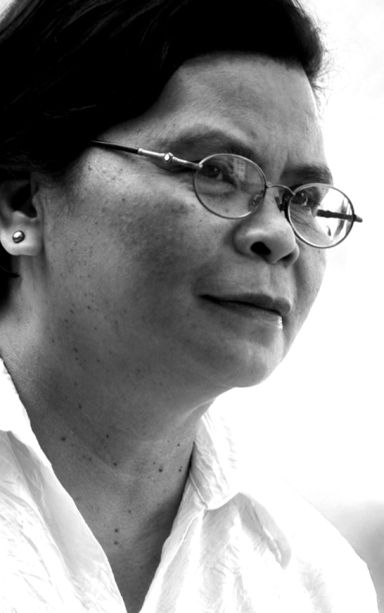
DELACERNA
The launching of Raymund Fernandez’s book “Kamingaw: An Impressionist Portrait of the Bisaya Painter Martino A. Abellana” last January 10, 2017 brought back memories of my interactions with Noy Tinong as we fondly called him from childhood to being a professional. As a child I grew up in Luanluan which used to be the cultural hub of Carcar. It was a neighborhood where the Abellana family lived and so did the other artists and writers of Carcar. They lived just next to my grandparents’ house.
When he came back to Carcar after finishing his studies in Manila, one of the people that Noy Tinong drew was my paternal grandfather, Agapito (Lolo Pitong). The charcoal drawing of my grandfather was printed on our reunion T-shirt in December 2014 during our family reunion.
Early morning I used to see him walk to a nearby river at the foot of the mountain. The place was called Dam because of a small dam downstream, and this was where he often painted. Even when he moved his family to another street in Carcar, he continued to make the usual morning walks and dropping by his parents’ house.
It was when I was in college that Noy Tinong became prominent because he was always the subject of interviews for research papers and theses especially among the students of Sr. Delia Coronel, ICM at St. Theresa’s College. Then the interest in studying the writers of Carcar and its cultural traditions overflowed that Sr. Delia exclaimed that “Carcar is overwritten!” But it made me proud especially when my classmates asked me to help them with their thesis on the zarzuela works of Carcarnons whom I happen to know because their children and grandchildren were my classmates in high school.
When I moved to teach in UP Cebu in the early 1970s in the High School, the Undergraduate classes were reopened and one of the dynamic programs was the Fine Arts Program with Martino Abellana, Julian Jumalon and Carmelo Tamayo as its pioneer professors. Classes in UP Cebu in the 1970s were held in the second floor and basement of the Administration Building. The right basement were the classrooms of the Fine Arts while the left basement were the classrooms of the High School.
I remember that on Saturdays was the schedule of Martino Abellana’s classes, and we would see his students spread out in the campus which had more trees then and a mini forest where the present Undergraduate building stands. One time I interviewed him under one of the trees for a project in Oral History for my Historiography course. Listening to him talk about art, music, literature, history and culture sharpened my directions and strengthened my resolve to pursue cultural studies.
Raymund’s book describes Martino as a great mentor. Martino’s children recall that their father was funny, he always made them laugh. He was a good family man. Everyday he commuted to the city to teach and come home in the evening and always bringing home hot bread from the city. His eldest daughter, Sister Gemma, ICM considers him a God-centered man who always sees God in everything he sees. His piety and mysticism encouraged her religious vocation.
I like Raymund’s reference to Martino as the Bisaya. But for me, Noy Tinong is the real Kabiloso. My generation grew up in Carcar being inculcated that Carcar is kabiloso which means “will always stand out, will not be lost, will always be on the go.” I thought it was a character trait but I realize that it’s more than that. Noy Tinong is Kabiloso because he came back to his roots rather than work in Manila where he could easily become rich. He came back to educate his people by sharing his gift. As a teacher, his pedagogy should set an example to present educators who are struggling with their classes. While Kabiloso may imply arrogance, this means humility, hard work, persistence – values closely attributed to Noy Tinong and will always be there. Most of all, he had a great sense of humor
Disclaimer: The comments uploaded on this site do not necessarily represent or reflect the views of management and owner of Cebudailynews. We reserve the right to exclude comments that we deem to be inconsistent with our editorial standards.
